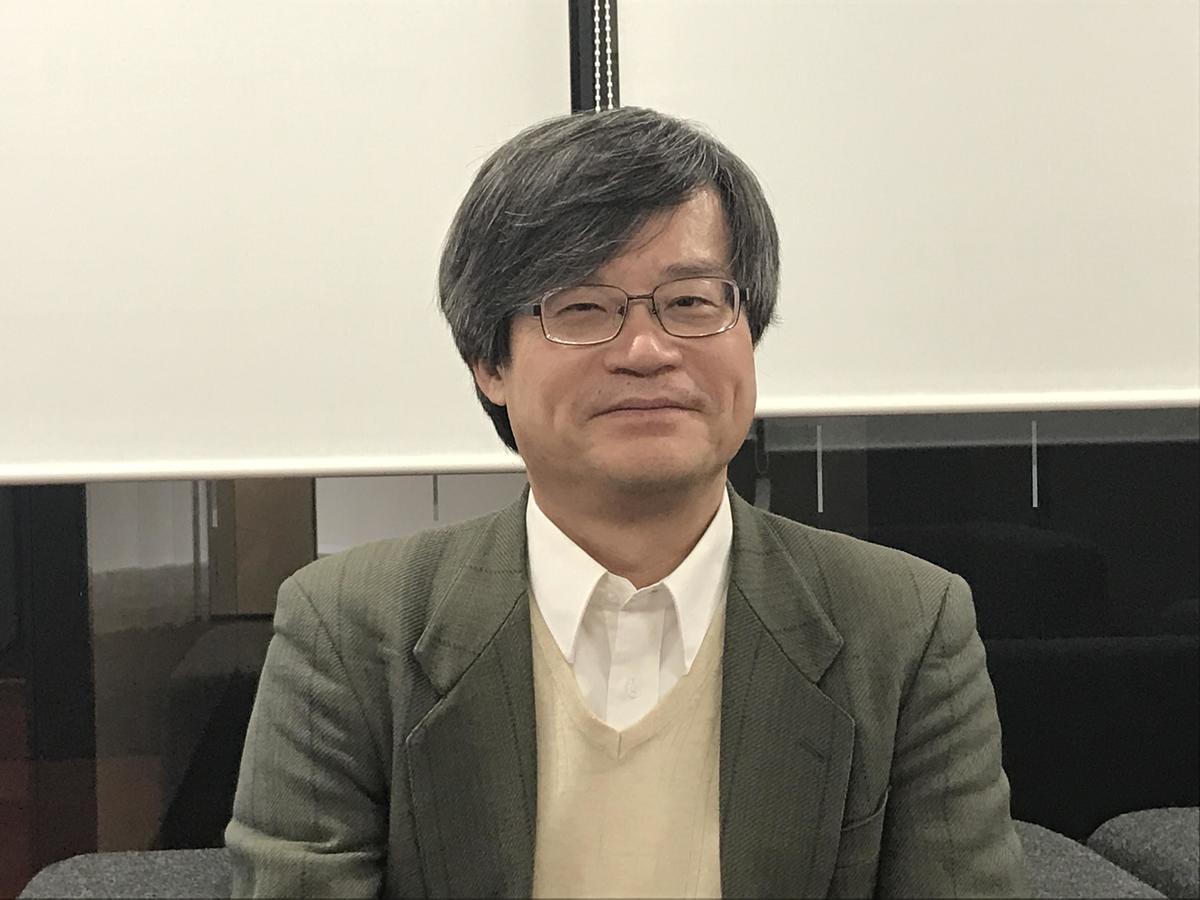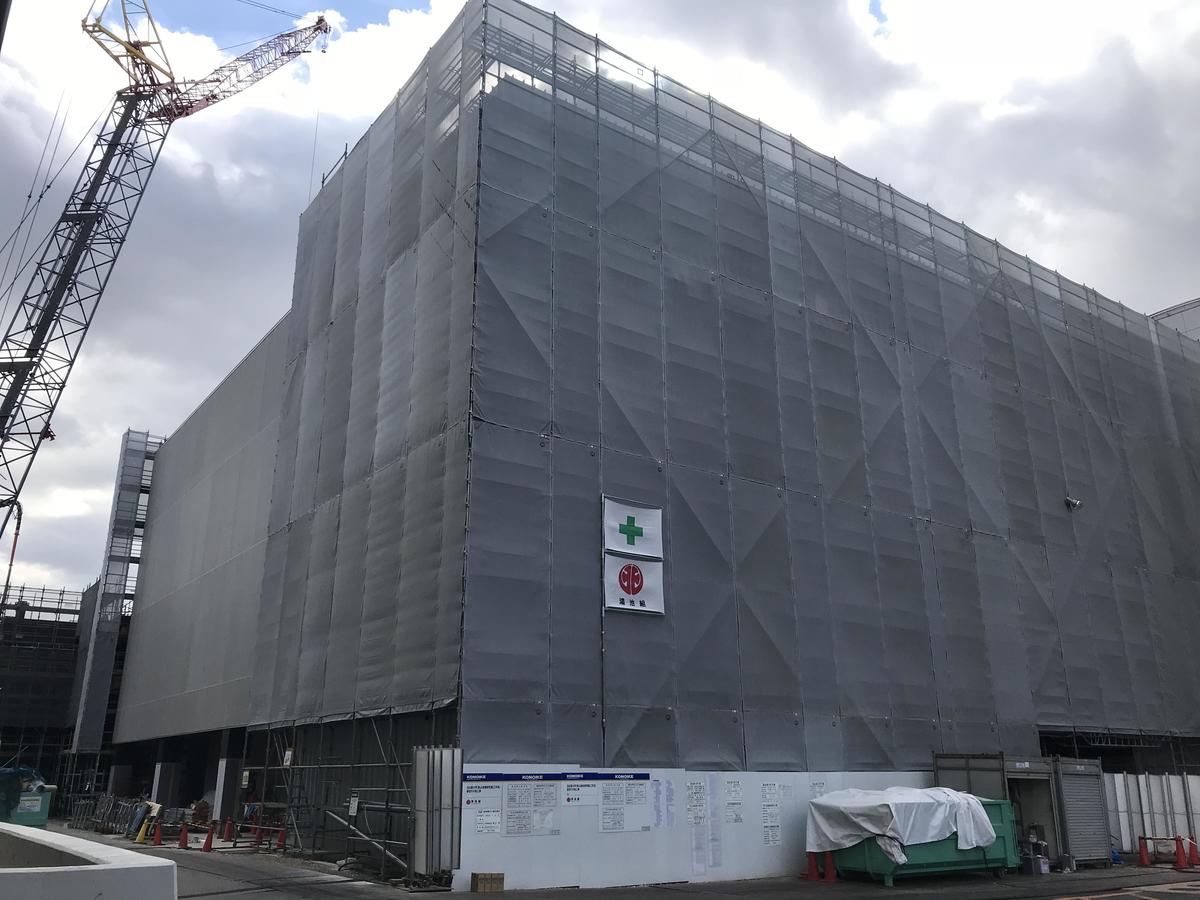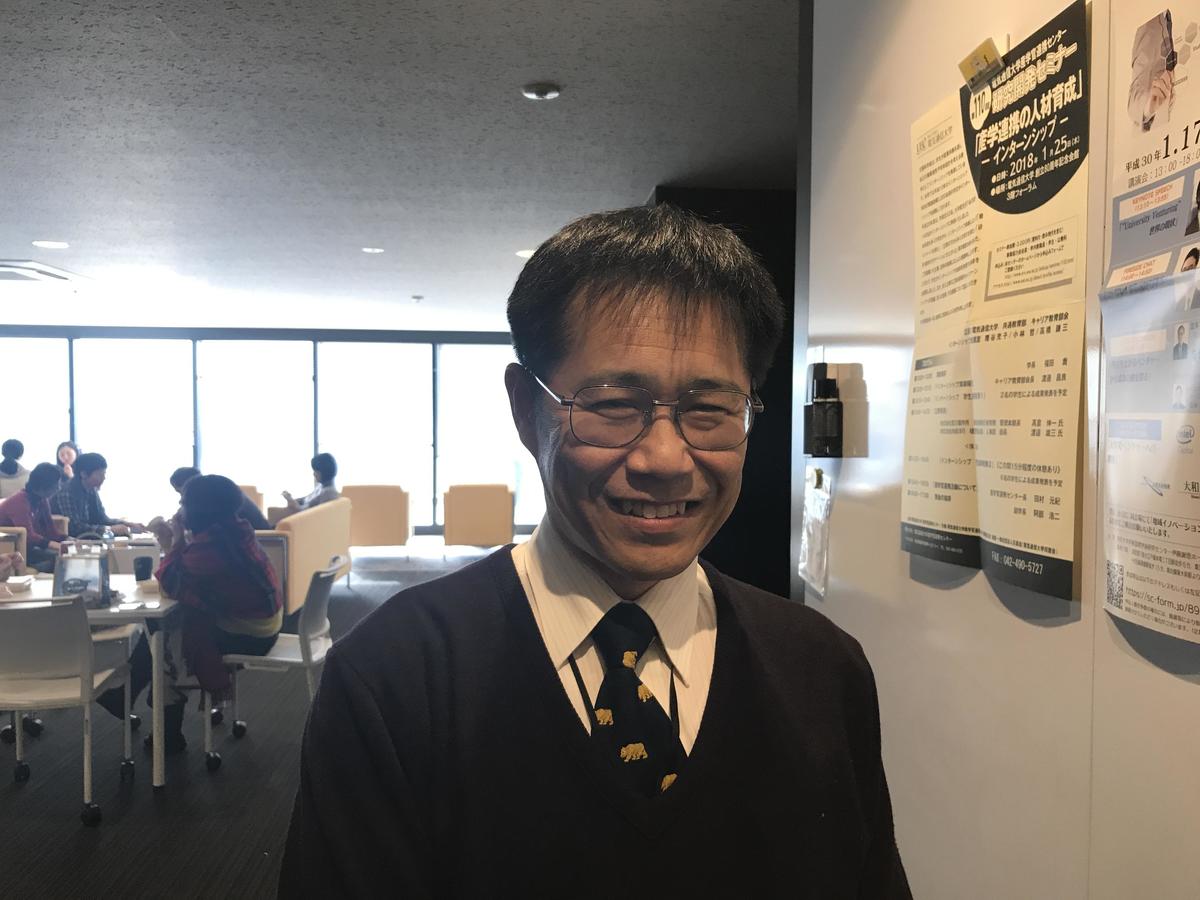February 26, 2018
Another 'Transformative'
At Nagoya University, the word transformative tends to evoke the Institute of Transformative Bio-Molecules (ITbM), which is part of Japan's World Premier International Research Center (WPI) Initiative. But there's another "transformative" here, and that's Transformative Electronics, pioneered by Prof. Hiroshi Amano, of the Institute of Materials and Systems for Sustainability (IMaSS), who won a 2014 Nobel Prize in Physics for invention of the blue light-emitting diode (LED). ITbM use the word to reflect its intention to change the world through molecules. When Amano asked ITbM's Director, Prof. Kenichiro Itami, if he could use the same word, he replied, "In fact, please do. It has a synergistic effect. Let's make all of Meidai transformative."
Amano means to change the world with electronics. But how? And especially at a university? I paid him a visit to learn more.
He first thought about "transformation of energy", as a core function of electronics is to transform types of energy: LEDs transform electric energy into light energy, photovoltaics the reverse, transforming light energy into electrical energy, and speakers transform electric energy into sound. By getting to the heart of electronics, Prof. Amano wanted to have a great impact on society. An overseas colleague advised him, why not use the word "transformative" then?
Transformative is becoming a buzzword in the world of scientific research. The National Science Foundation (NSF) in the U.S. holds that transformative research will play a crucial role going forward, and is explicitly committed to supporting research with potential of becoming such. It defines transformative as follows:
"Transformative research involves ideas, discoveries, or tools that radically change our understanding of an important existing scientific or engineering concept or educational practice or leads to the creation of a new paradigm or field of science, engineering, or education. Such research challenges current understanding or provides pathways to new frontiers."
Amano himself originally wanted to create electronics that not only transform energy, but also move people. For example, while a display that converts white light into a full color spectrum by passing it through numerous filters is extremely inefficient -- only 5%, say -- if the people who watch a movie on that display are moved, the emotional energy is immeasurable, and therefore its efficiency is infinitely great. Creating new value beyond the obvious step of improving energy conversion efficiencies can truly change the world. "Transformative" was the perfect word to describe such a research mission.
 Blue LEDs changed the world. Prof. Hiroshi Amano is looking beyond them to transform society through electronics.
Blue LEDs changed the world. Prof. Hiroshi Amano is looking beyond them to transform society through electronics.
But how, exactly? Taken together, electronics are extremely broad and, needless to say, much of our daily lives would be impossible without them.
Amano's focus is on electronics as infrastructure for realizing a more advanced information society. The coming technical age in which cars will drive themselves and artificial intelligence will dramatically alter our work and home lives is often spoken of, but the means of achieving those dreams are still inadequate. They require installing semiconductor devices in all sorts of places, along with a number of devices, and a communications capacity for processing their data, of an entirely different order of magnitude. Driverless cars, for example, require the processing performance of today's supercomputers (if all data is to be processed onboard), or a telematics system that can transfer data at 100 to 1,000 times the current technology (if data is to be processed remotely). Semiconductors powerful enough to meet those requirements are still being developed.
Next-generation power semiconductors hold the key. These electronic devices are used to control the flow of power, by converting alternating current (AC) to direct current (DC), or by switching circuits on and off. The well-known inverters in air conditioners and other consumer appliances are one example. Compared to other kinds of semiconductors which can be likened to the "brains," like the tiny electrical currents moving around in a computer's CPU, power semiconductors are more like "muscles," as they can be used at far higher voltages. Mainstream silicon semiconductors today have to be connected in parallel in large numbers, which causes them to generate a great amount of heat and lose efficiency. This is why new semiconductor materials are needed; without them, the information age of the future will never happen. "That's exactly the problem I want to solve," says Amano.
Enter gallium nitride (GaN), the semiconductor material commonly used in blue LEDs. Having a high electrical conductivity, it could dramatically reduce power loss, to one-tenth that of silicon. But, it's difficult to work with. Though Amano succeeded in developing the blue LED as his global rivals threw in the towel, power semiconductors require an entirely different kind of technology than that used to emit blue light. For example, the LEDs in traffic lights can function even with some amount degradation. This technology is essentially unchanged from the time when Amano was a student; the semiconductor material can have a hundred million defects (e.g., distortions) per square centimeter and still work. In case of transistors that control automobiles, a single defective transistor would lead to an accident. There are still issues to be resolved, including growing crystals with fewer defects, but Amano says he's starting to see a path forward and is working out those steps now.
 Cleanroom building under construction in the southeast corner of Higashiyama Campus. The building will form part of a research park, with an adjacent research building slated for completion by year end.
Cleanroom building under construction in the southeast corner of Higashiyama Campus. The building will form part of a research park, with an adjacent research building slated for completion by year end.
The important point here is "to clearly distinguish innovation from invention," says Amano. Traditionally, universities are good at invention -- in other words, moving from 0 to 1. But innovating in the real world means making more in cheaper way, or going from 1 to 10. Japanese universities have not recognized the value of improvement in such cost efficiency and productivity, but changing that could help universities get to a place of innovation. Amano is ambitious. "I want to do the whole gamut, from 0 to 10," he says.
Indeed, go to Silicon Valley and you'll meet lots of people in academia who are trying to do 0 to 10. Even such innovating companies as Google, Cisco, Tesla, and Uber were brought to life at Stanford University. When Amano visited Silicon Valley, however, he was struck with the impression that "Silicon Valley is certainly impressive, but perhaps they're leaning too heavily toward the Internet and AI, with only businesses based on those coming out of it." In the 1970s and 80s, companies like Hewlett Packard and Apple began by actually making things, but nowadays that function has mostly moved overseas and isn't creating business in the U.S. "That's precisely our target for Japan, in fact," he says.
Infrastructure dedicated to that purpose is now in the works. The Center for Integrated Research of Future Electronics (CIRFE) was established in fall 2015, and construction on a GaN open innovation center for industry-academic partnerships is underway in the southeast corner of the Higashiyama Campus. An expansive cleanroom building is first scheduled to be completed by the end of March, followed by a research building dedicated to transformative electronics by year end. The GaN Research Consortium already has 46 corporate members, in addition to other universities and national research and development organizations. Plans for the center include everything from growing GaN crystals to making semiconductors to developing systems powered by them -- indeed, the "whole gamut."
The question is how to get companies involved.
Hiroya Sato, Chief University Research Administrator (URA) in the GaN Research Strategy Office of the Academic Research & Industry-Academia-Government Collaboration, was doing GaN research at Sharp before he moved to Meidai in summer 2016 at Amano's invitation. According to Sato, private companies tended to see universities as not knowing manufacturing and merely "playing pretend." Since there were plenty of talented and proud solo players, what companies wanted was to have them perform to their liking and they themselves did the R&D work that led to commercialization. Such idyllic times continued for a while. But now companies no longer have the resources, making collaboration with academic researchers critical. But companies won't partner with anyone without a track record. Sato himself knows full well the difficulty of industry-academic partnerships. Now that his environs have changed from company to university, his goal for the foreseeable future is to produce results at the university that are attractive to companies. Raising the potential of GaN, which he failed to commercialize in the private sector, in his new capacity would be a revenge of sorts for Sato.
First, Sato says, we needs to show that it can correctly perform all of the 100 to 300 steps involved in making semiconductor electronic components -- in other words, that it can "flow" as a whole. Likened to a concert hall, it's not enough just to build the hall; we also have to play a concert and have its songs heard. Sato expects this will take nearly a year, "but we should have confidence that a Japanese university can do it too."
 Chief University Research Administrator (URA) Hiroya Sato wants to use his private-sector experience to build bridges between the university and businesses
Chief University Research Administrator (URA) Hiroya Sato wants to use his private-sector experience to build bridges between the university and businesses
On the topic of partnerships with industry, a model does exist. The Interuniversity Microelectronics Center (IMEC) in Belgium is renowned as a global center for open innovation in the semiconductor processing field. As its name suggests, IMEC was started by academic researchers and now conducts joint research with companies from around the world. Several Japanese companies, including Panasonic, are currently collaborating with IMEC.
Amano wants to turn CIRFE into a place like IMEC -- even better, in fact. IMEC's strengths lie in the ability to use its cutting-edge research facilities freely, and that its researchers can lead research by proposing future technologies. Researchers from industry and academia, as well as Ph.D.-level students, all work together on frontier fields. This creates a virtuous circle where the experience they accumulate can then be used to envision a more distant future.
With his new center, Amano wants to "show people a future where the best dreams of today are made real." Currently, he's developing systems that would send power wirelessly to devices such as drones and electric vehicles, an objective partly inspired by the challenges facing Japan's aging population. If wireless power -- think of it as the Internet of energy -- becomes a reality, seniors with reduced motor faculty could get around on cutting-edge devices without having to worry about charging or plugging in. The ability to supply power anywhere anytime could transform society the way the Internet transformed our information environment.
"We're creating a new age starting with creating the individual devices. It will take time, but I have the feeling we can do much, much more to transform society," he says.
According to Prof. Amano, research on next-generation semiconductors that use GaN, especially with serious intentions to apply them to communications, is still globally rare. I hope he can leverage his first-mover advantage to trigger world transformation.
And I can't wait to see how the two transformative researches at Meidai transform our world.

 Subscribe to RSS
Subscribe to RSS